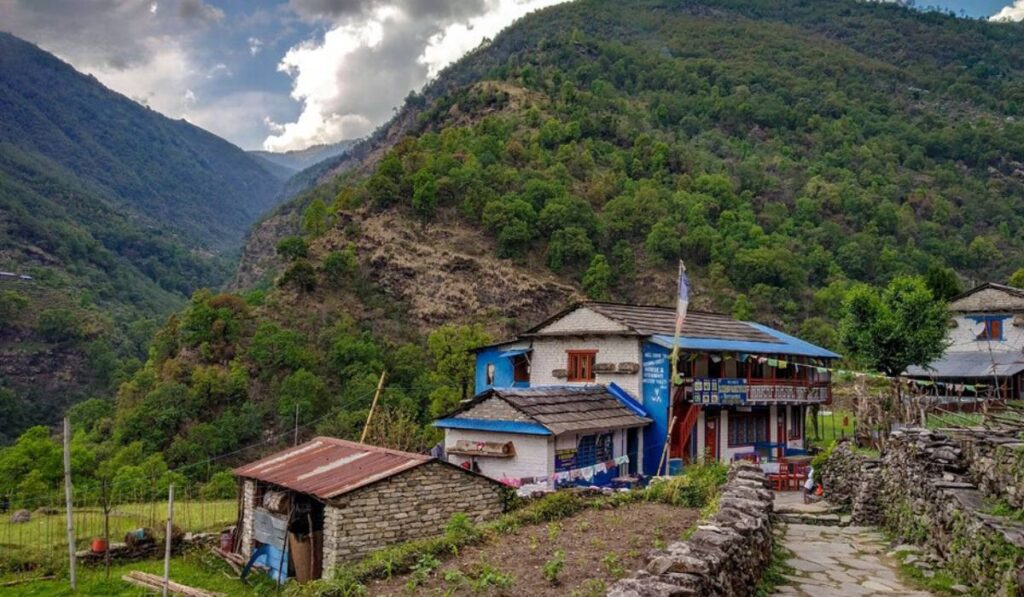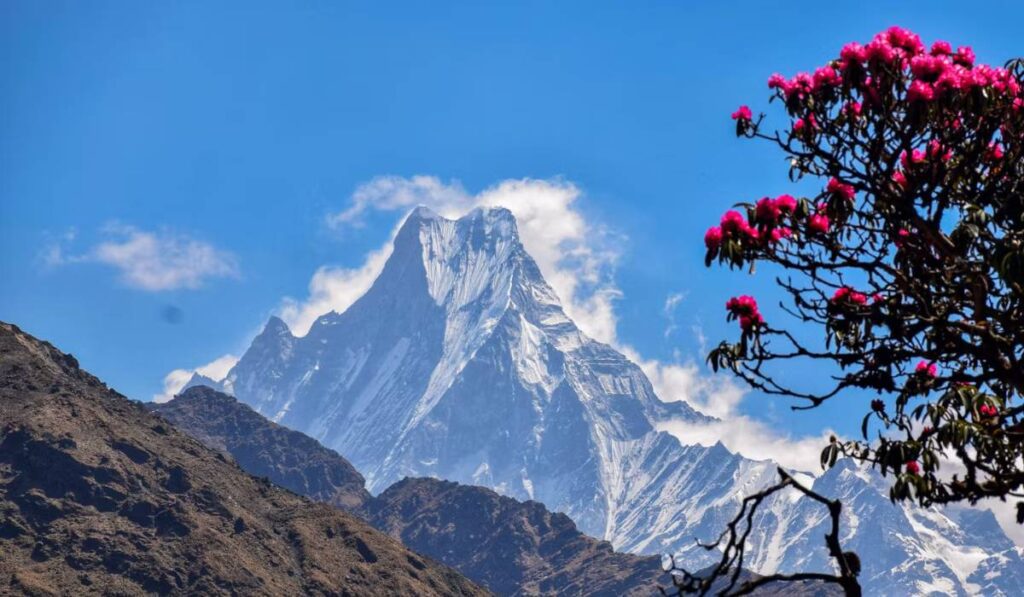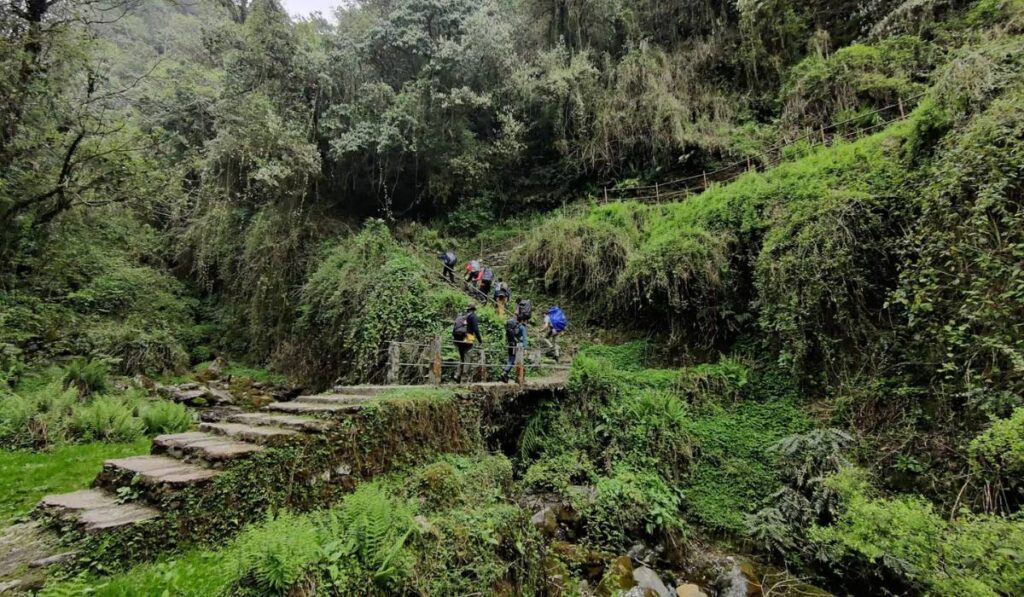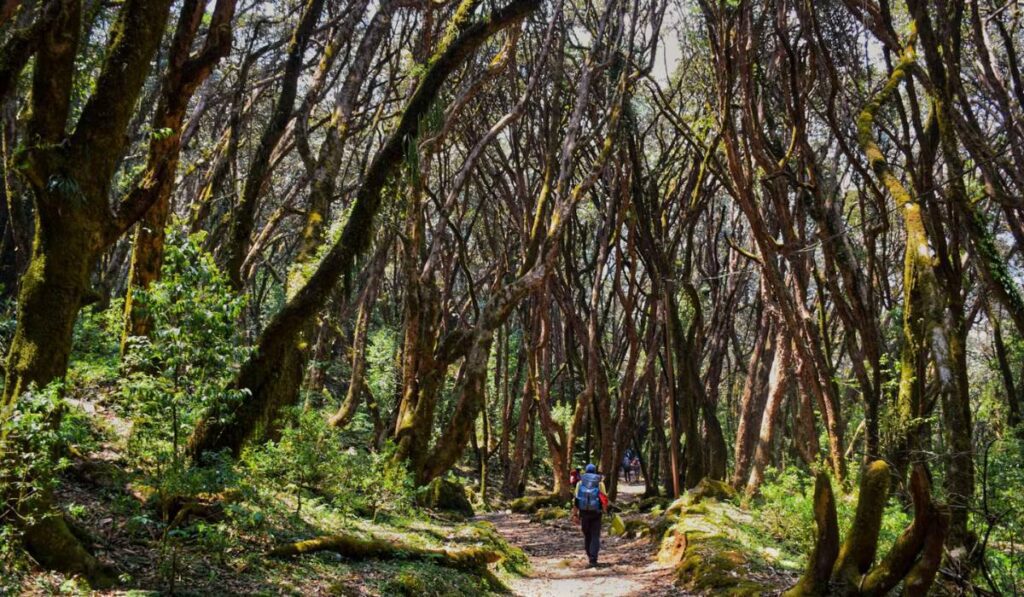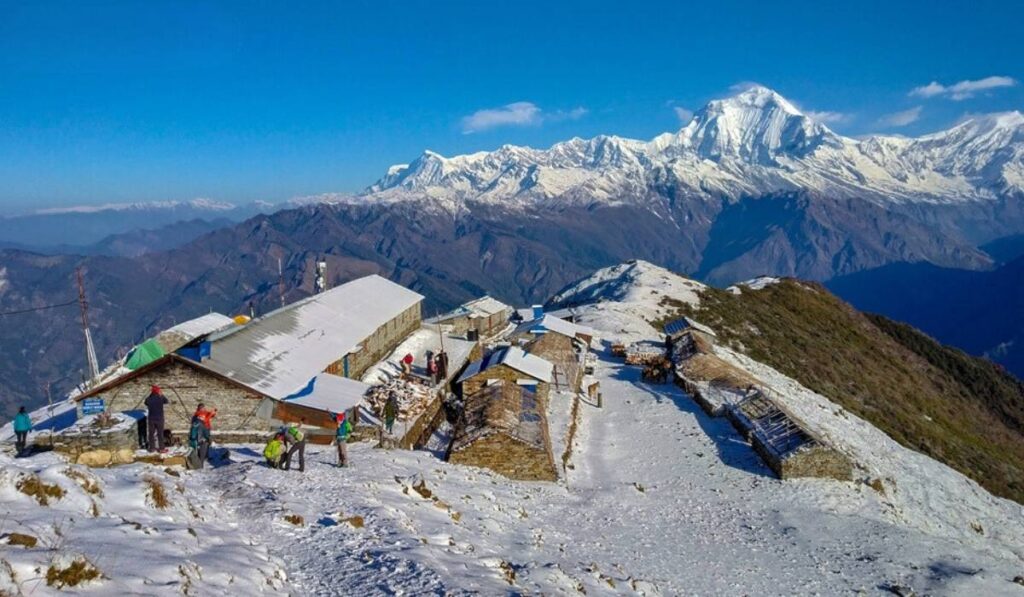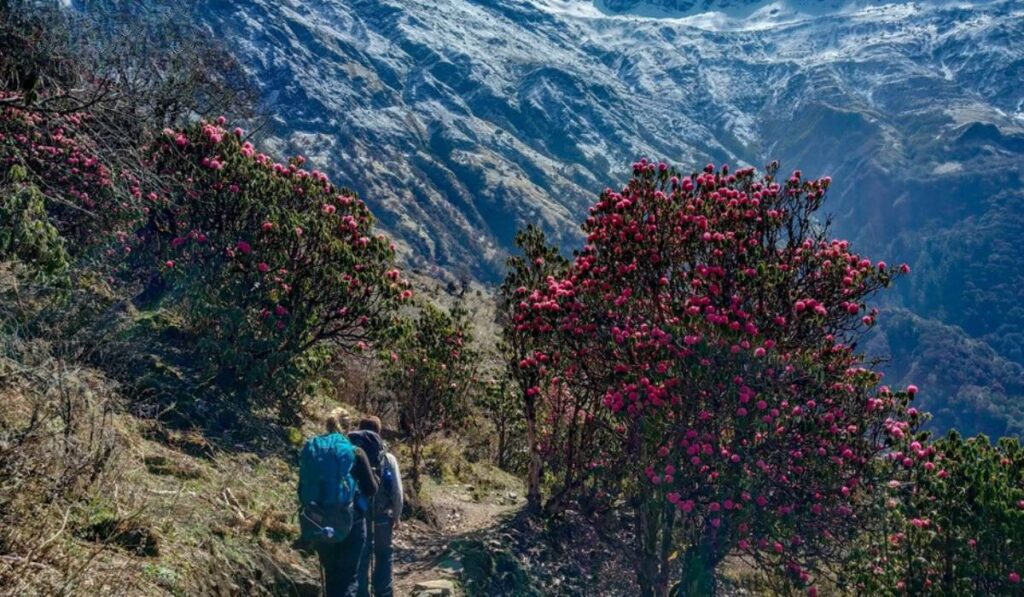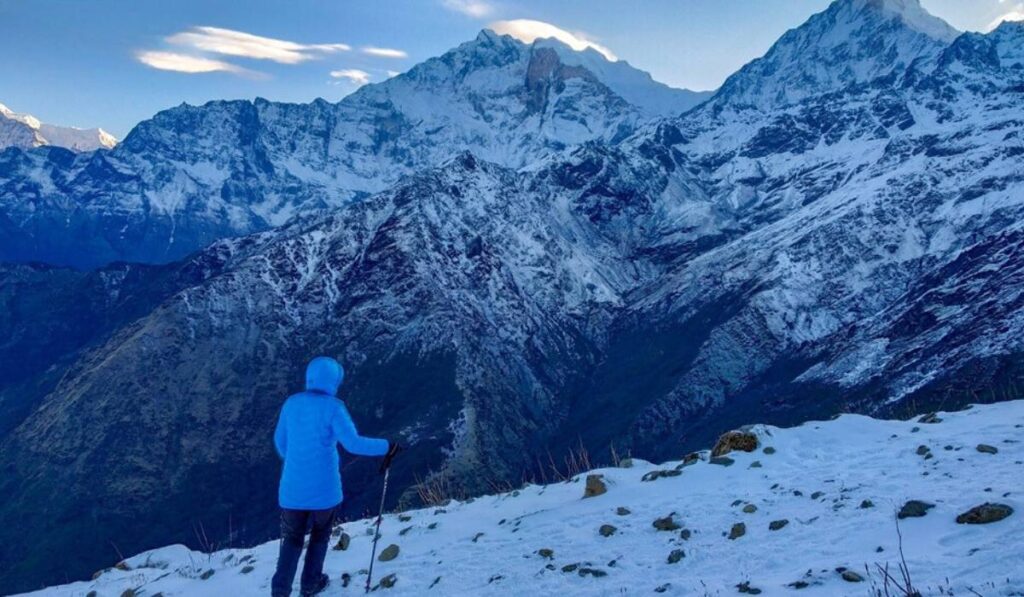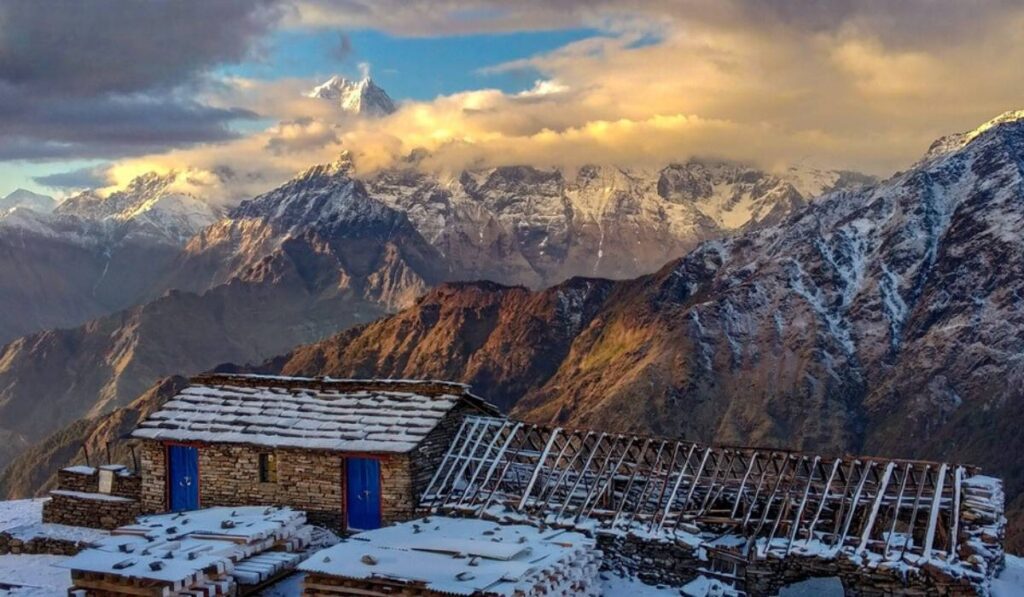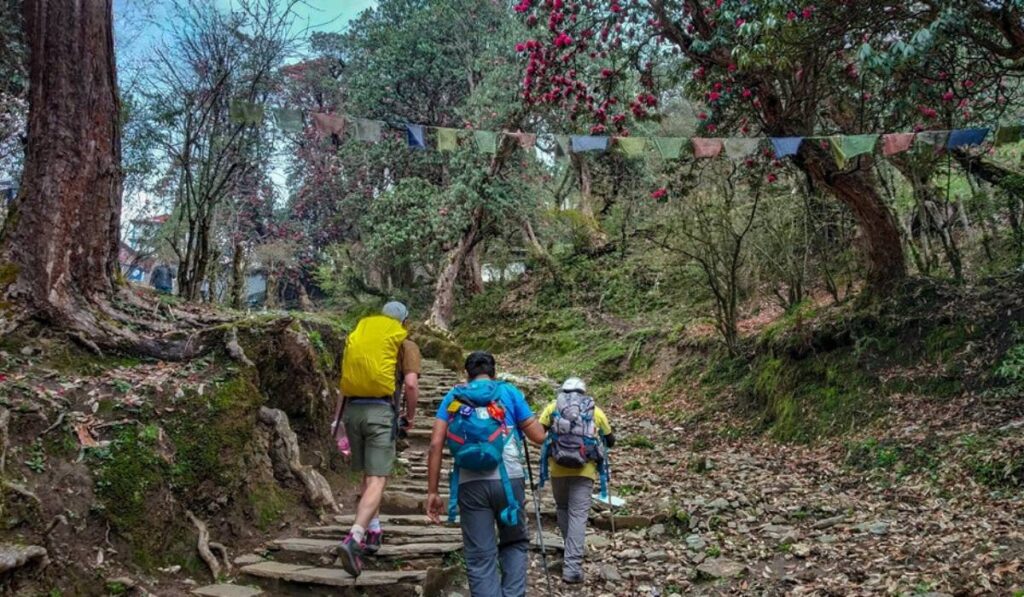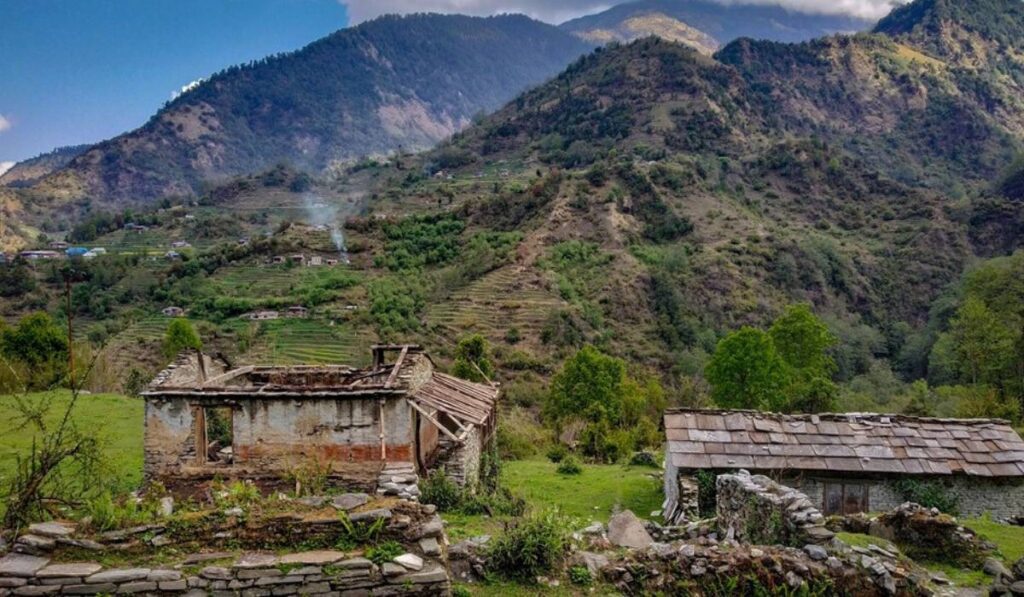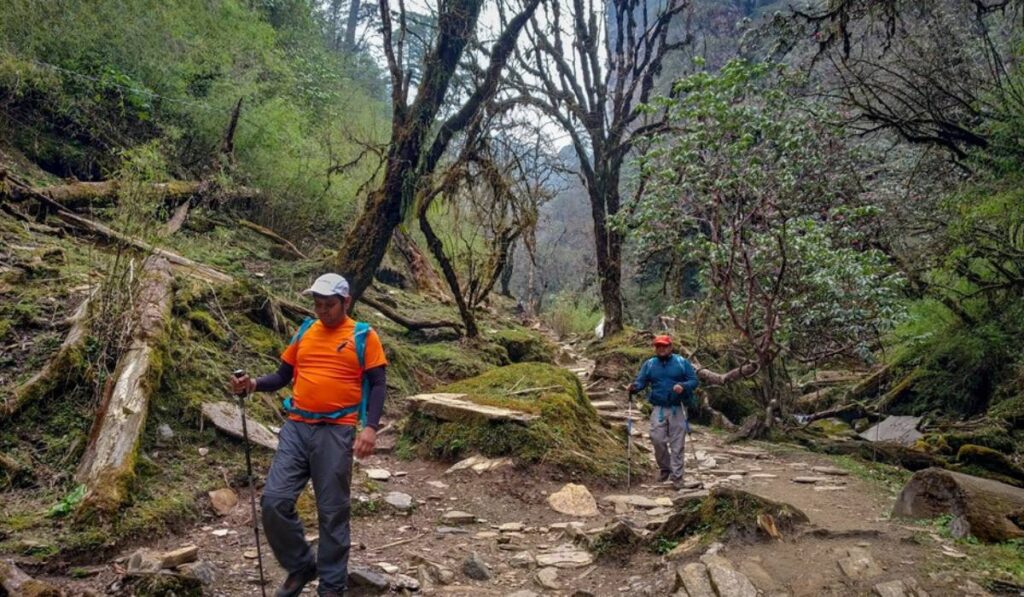Trip Facts
- Bus, Airlines
- 15,710 FT
- Kimsee, Nepal
- April (Spring) and October (Autumn).
- All meals during the trek
- Eco-Tour, Hiking
- Guesthouse or Lodge
-
10
-
60
Discovering the Magic of Khopra Ridge Trek
Are you ready for a trip you’ll never forget in the middle of Nepal? The Khopra Ridge is a secret gem of hiking that I’d like to show you. Beyond a hike, it’s an amazing experience that will blow your mind.
1. Khopra Ridge: More than Just a Ridge Walk
It would be like going for two days on a slope with huge mountains on both sides. The Khopra Ridge hike is all about this. Being able to see such beautiful mountain views is rarely possible. As you make your way up to Khayer Lake, which is about 15,700 feet above sea level, you can feel the thrill of excitement. You won’t find anything exciting or dangerous on the Annapurna Base Camp (ABC) hike like this mountain lake.
2. Great Views from Inside Cozy Tea Houses
Along the Khopra Ridge trail, there are cozy tea houses where you can spend the night. These tea houses are more than just a place to stay warm; they also have amazing views from the inside. When you compare them to regular camping, you’ll be amazed at how luxurious they are.
3. More Highlights that Take Your Breath Away
You can expect a lot on the Khopra Ridge hike. The side trip to Khyair Lake is one of the best parts. A little-known gem that makes you feel spiritual when you visit this well-known local spot.
Still, there’s more magic to come. The Kali Gandaki, the deepest gorge in the world, is another thing you’ll see. Between the beautiful hills of the Dhaulagiri range and the Annapurna range, it has a view that will blow your mind.
If you’re lucky, you might even be able to walk above a blanket of clouds and see a beautiful sunset.
The ABC walk has a lot of steps that can be hard on your knees. The Khopra Ridge trek, yet, takes a more standard mountain trail with its own ups and downs and challenges.
The Khopra Ridge hike is also a real hidden gem in Nepal. If you’ve been on Nepal’s busy trails, you’ll enjoy the peace and quiet of this less-crowded journey.
In other words, if you want to see beautiful nature, have fun, and relax, The best thing to do is to go to Khopra Ridge. It’s a trip that will stay with you forever and make you appreciate Nepal’s natural beauty even more.
Overview
One-of-a-kind views of mountains change all the time on the Khopra Ridge Trek in Nepal. It’s always exciting to walk along a beautiful hill. At 3,900 meters, Khopra Ridge offers the best view of the sunrise. From there, you can see 23 important Himalayan peaks, including Mt. Dhaulagiri I and Mt. Annapurna I, which are two of the world’s tallest mountains.
Khopra Ridge Trek Highlights
- Spectacular Sunrise: See 23 of the highest Himalayan peaks rise in front of your eyes from Khopra Ridge during the sunrise.
- Diverse Landscapes: Explore alpine fields, thick woods, parts full of rhododendrons, and cute mountain towns.
- Escape the Crowds: Enjoy solitude away from the hustle of popular trekking routes.
- Two Unique Gems: Explore both Khopra Ridge and the elusive Khayar Lake in a single trek.
- Moderate Challenge: A trek suitable for those with a good fitness level, offering stunning mountain vistas and captivating landscapes.
- Up Close with Dhaulagiri: Stand in awe of the colossal presence of Mt. Dhaulagiri, right before you.

